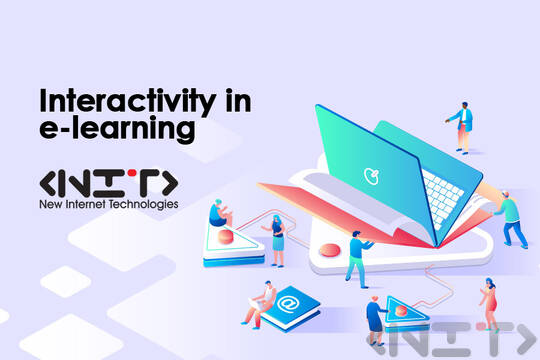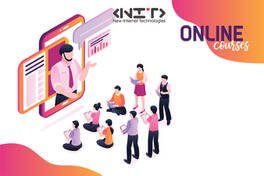
In today's article, we will look at the levels of interactivity in e-learning, as well as how to determine which methods to use depending on the learning objectives.
Levels of interactivity
What is interactivity in e-learning? This is the interaction between the learner and the learning content during the training. Learners should be encouraged to use interactivity in communication, which improves the acquisition of knowledge or skills.
The concept of levels of interactivity is also associated with the complexity and final satisfaction with the course.
Level 1 - Passive
No interactions, also known as "page turning". In this case, the learner is the recipient of the content. He passes through it in the order set in advance, without the ability to choose where to go and what to see. It is not very motivating for the recipient, and it is barely an online learning course, but it is suitable for the transmission of basic concepts. It is technically easy to implement, includes graphics, photos and simulations.
Level 2 - Minimal/Limited Interaction
It differs from the first level with a little more opportunities for interaction on the part of the learner. Even more basic, this level allows you to work with knowledge not only through a test, but also through simple exercises such as connecting and recognizing elements. Interactive objects in e-learning include simple animated graphics, menu navigation with dictionary and resources, as well as audio and video components.
Level 3 - Moderate interaction
The complexity and the possibility of customization at this level are significantly greater. The learner becomes an active participant who has more control over the learning. Here the elementary presentation of information is transformed into a dynamic interaction that optimizes the balance between active learning and its internalization. Active objects would be animated videos, specialized audio recordings, interactive pictures, games. The level is also very suitable for more complex simulations and solving scenarios.
Level 4 - Simulations and game learning
The highest level of interaction on the part of the learner. The content of e-learning is transmitted in the form of simulation games, which maintains high motivation. Game and multimedia technologies are typical, including original videos, 3D objects and virtual avatars. It is a collection at all levels so far, but with strong interactivity and high levels of satisfaction.
How to choose the right interactive teaching methods
So far, we have looked at levels of interactivity and their relationship to learning objectives. Depending on whether they are focused on memorization and understanding or their emphasis is on the use of new models of work - teaching methods will differ.
In the list of factors influencing our choice, we can add:
- The technical capabilities of the trainees and the trainer/designer of the training, as well as the access to the various LMS systems;
- The budget and organizational policy of the company.
In other words: Which comes first - the content of the training or the learner?
The quantity and quality of teaching methods are directly related to the motivation and results of the learners. If we pay attention to this at the level of analysis, then the part with the design of interactive learning will be easier.
Here are some questions that will help this process:
What characterizes your course?
What are its specifics? What is its content oriented towards? To provide important information to remember or provide good practices for dealing with problems? Should the learning process be passive or active?
This is probably the most important question you need to answer. This answer will direct you to the number of interactive methods to use.
If the content is "dry", but an important instruction, then you can use the first level of interactivity in learning - passive. Ideal for transmitting information, without unnecessary buttons that would only distract the learner.
On the other hand, for an active training, which aims to convey valuable work practices for dealing with cases, level 3 - moderate interaction, will be better suited.
What do you want and what do the students want?
Remember who you are making the training for! The beautiful design and the interactions you put together may appeal to the bosses, but they will not necessarily help the learner. The main goal is to achieve the specific objectives of the training, and in order to achieve them, the training methods you include must meet the needs.
Sometimes excessive interactivity can be equal to none - the learner may find it annoying and difficult to understand because of the hidden text under many buttons. Do not overload your training, leave a little "space to breathe".
The decision on interactivity is also influenced by the devices on which the e-learning will be used: desktop computer, tablet or mobile phone
Online trainings are preferred not only because of their wide variability, but also because of their mobility. You can be anywhere with the training in your pocket on your phone. This changes the way you think about design - the size of the screens of mobile devices and laptops are taken into account. The size of the uploaded files also plays a role.
Take the time to analyze the possible devices that could be used to watch the training, you will not regret it - you will be able to find out which interactive training methods to use.
The training budget
Last but not least, the budget is directly proportional to the levels of interactivity. Financial or time budget, it is important to allocate as efficiently as possible. The ultimate goal - the desired learning results are achieved without breaking the bank and boring the learners with unnecessary interactivity :).
Sources:
https://www.shiftelearning.com/blog/bid/190140/Levels-of-Interactivity-in-eLearning-Which-one-do-you-need
https://www.shiftelearning.com/blog/the -right-amount-of-interactivity-in-elearning



